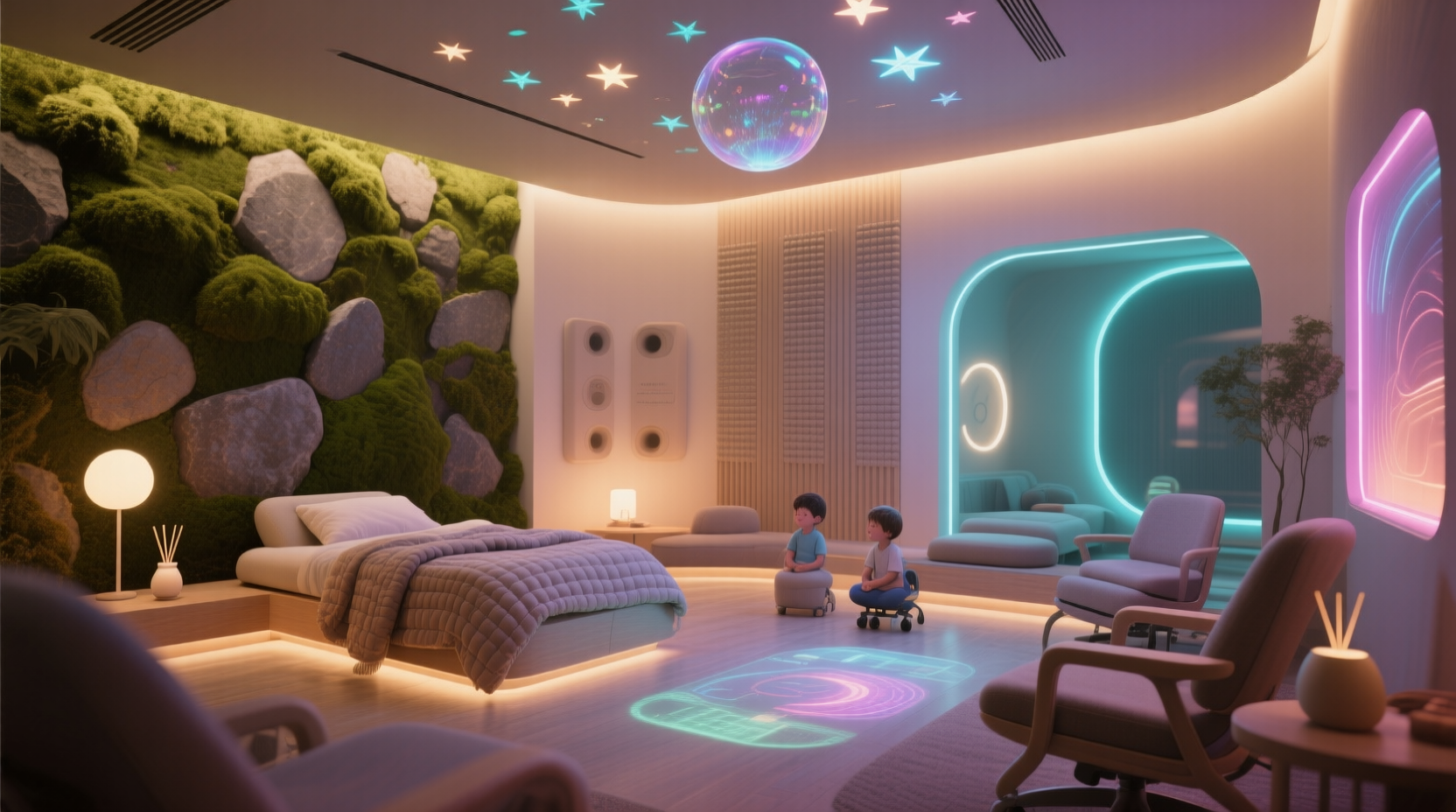A sensory room is like a quiet hug you can step into. It’s not about fancy gadgets or spending thousands. It’s about crafting a place where the mind unclenches, where your body finally sighs in relief. And honestly, the beauty is—it works for kids, adults, and anyone who just wants a little pocket of calm when the world feels too loud.
You don’t need a mansion to have one either. A small corner, a repurposed closet, or even part of your bedroom can become a gentle retreat. The magic is in how you design it. Let’s walk through 20+ ideas, each carrying a different kind of calm, so you can pick and stitch together what feels right for you.
1. Soft Lighting That Feels Like a Sunset
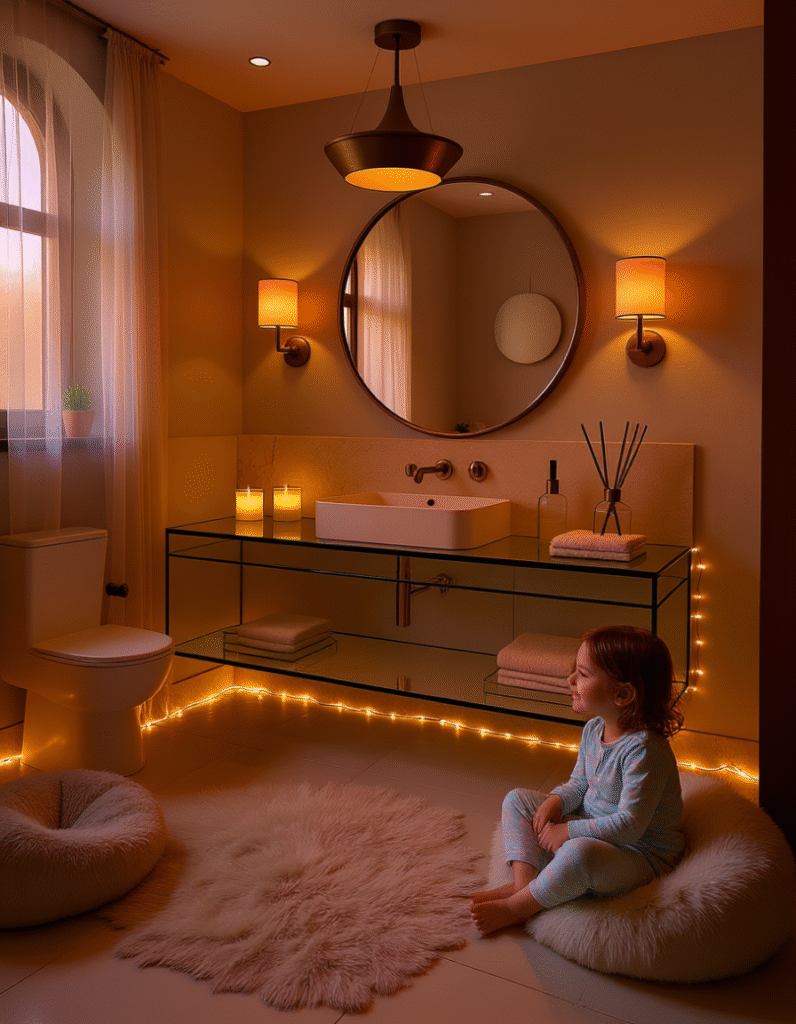
Fluorescent lights are the enemy of peace. They hum, they flicker, they make your brain work overtime. Instead, think about warm, dimmable lamps, fairy lights, or salt lamps.
The trick is layering. A soft glow in one corner, maybe a few twinkling strands draped like stars. It tricks your brain into slowing down, like watching dusk roll in after a long day. Some folks even swear by color-changing bulbs—blue for focus, pink for warmth, green when you want the forest vibe without leaving your house.
2. Weighted Blankets and Cushions
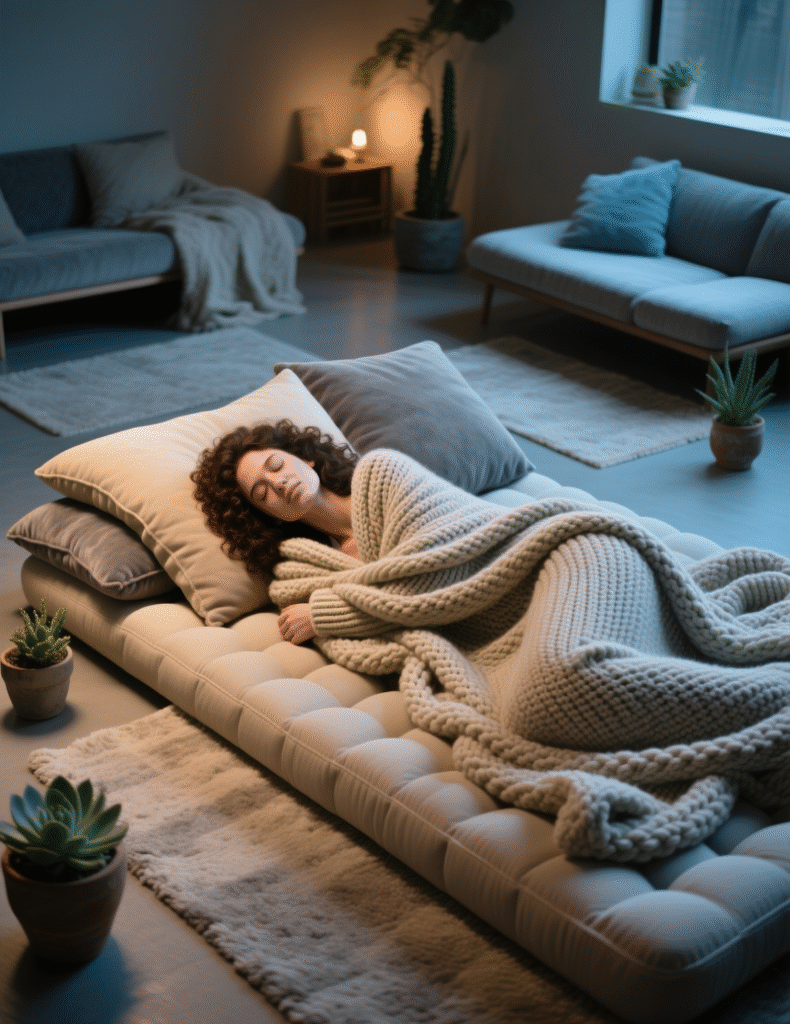
Pressure is soothing in ways words can’t quite explain. A weighted blanket feels like the steady hand on your shoulder that says, “you’re fine.” Cushions with different textures give the body something to explore without thinking too hard.
Pile them up in a corner. Let the space feel like it’s holding you, not the other way around. If you can, mix materials—velvet, cotton, knits—because our brains love small surprises like that.
3. A Wall of Textures
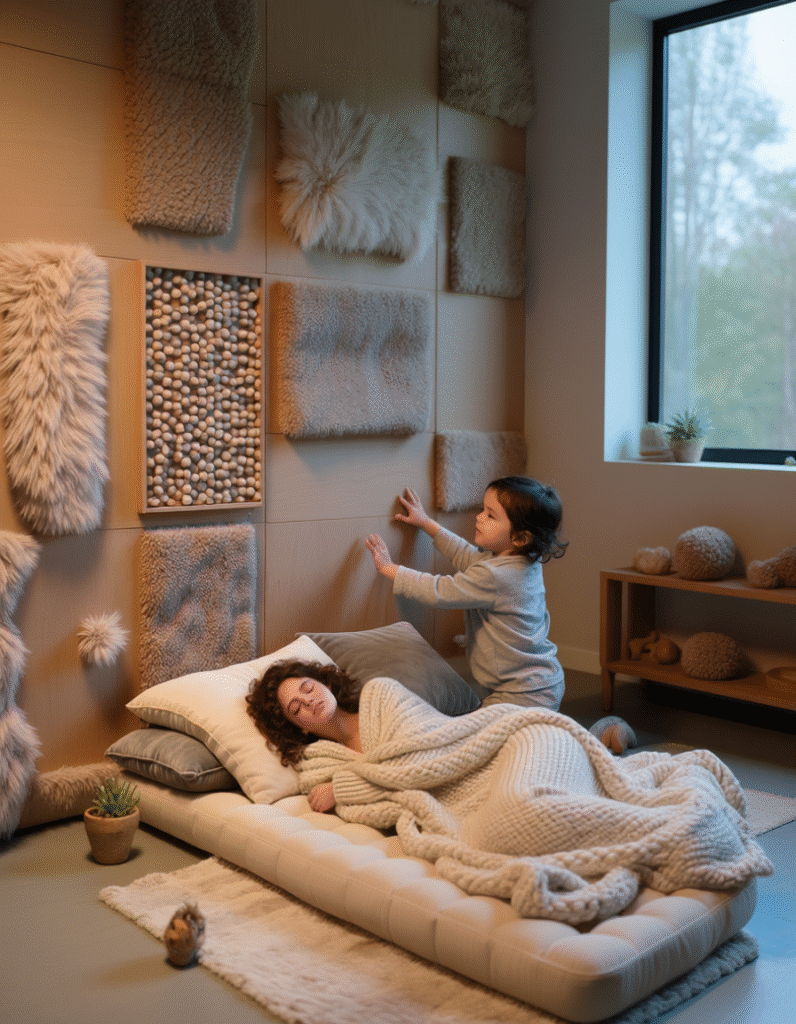
Walls don’t have to just sit there. Add panels with different fabrics, cork, bamboo, even faux fur patches. Touching textures grounds you in the moment in a way staring at your phone never will.
You can go big, or keep it simple with a frame that holds swatches of fabric. I’ve seen people use old rugs cut into squares and hung like art. Touch, stroke, press—it’s low effort, high return.
4. Gentle Soundscapes
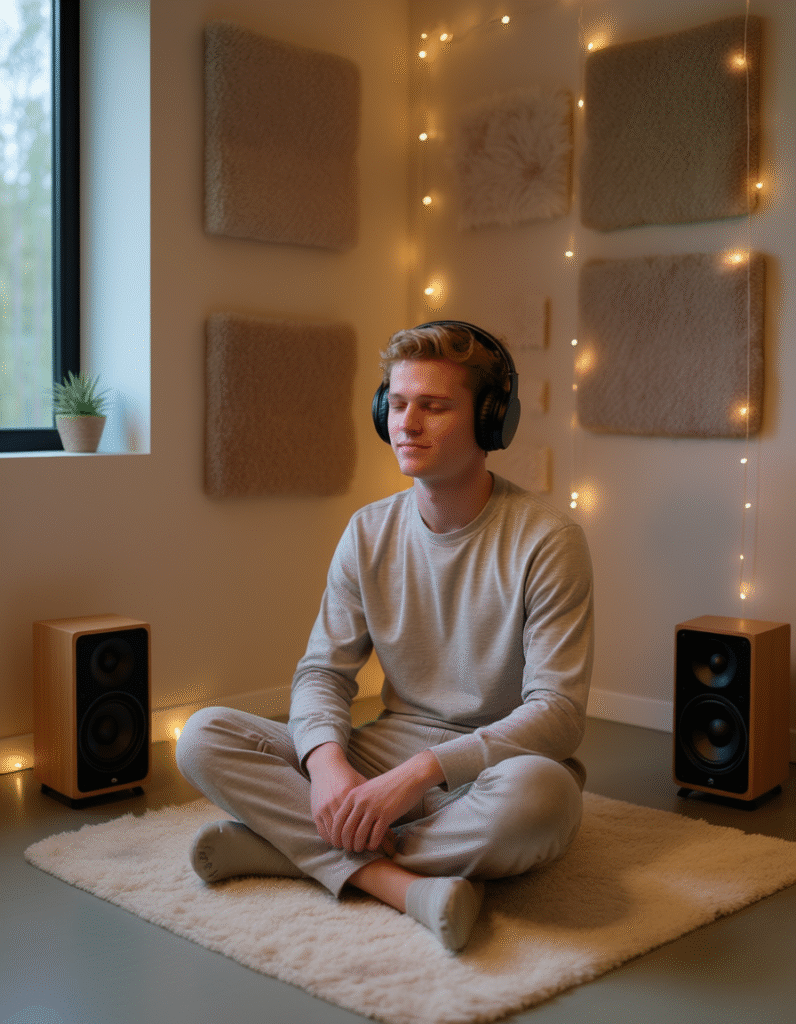
Silence is beautiful, but sometimes silence feels too loud. That’s where sound comes in. A white noise machine, a playlist of rainstorms, or even a little indoor fountain makes the air feel softer.
Don’t underestimate the power of sound. Ocean waves on repeat can trick your body into breathing slower. And if you’re sharing the space, headphones give you your own little cocoon without disturbing anyone else.
5. Movement Zone
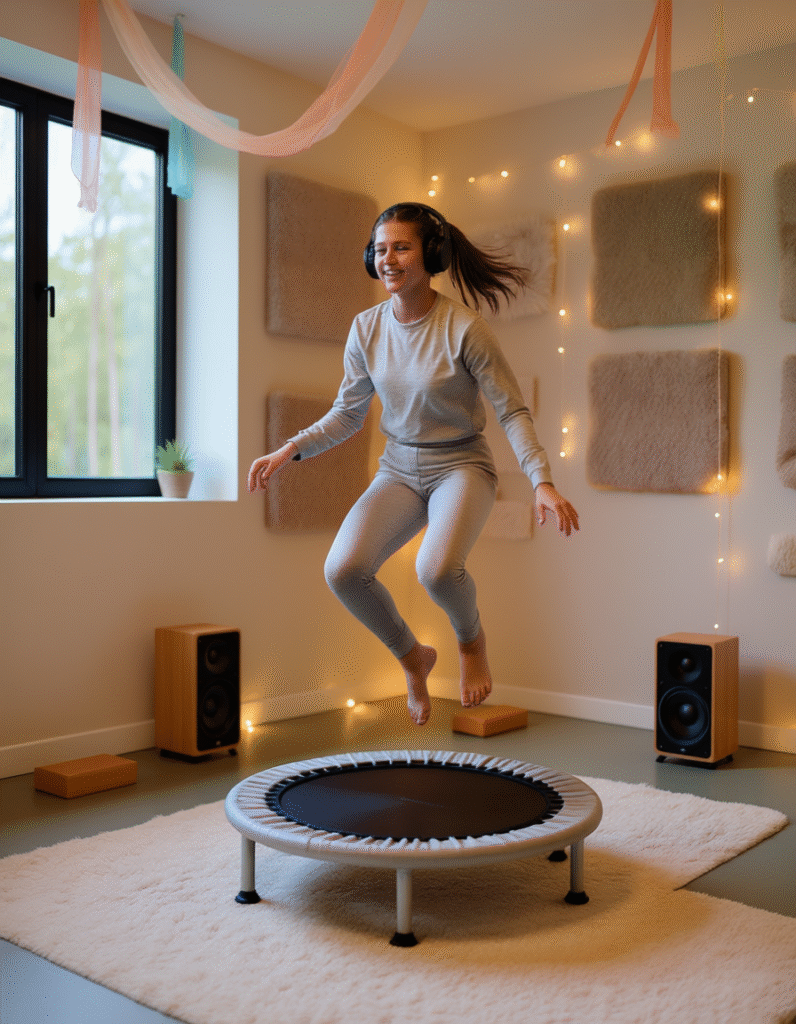
Stillness is calming, but so is movement—just the right kind. Add a swing chair, a small trampoline, or a yoga mat. Movement helps regulate emotions, it lets your body do the talking while your brain takes a break.
Imagine curling into a hammock chair, swaying slowly, with the lights dimmed. It’s childlike, but that’s exactly why it works. Sometimes our nervous systems need a reminder of that kind of safety.
6. Aromatherapy That Doesn’t Overpower
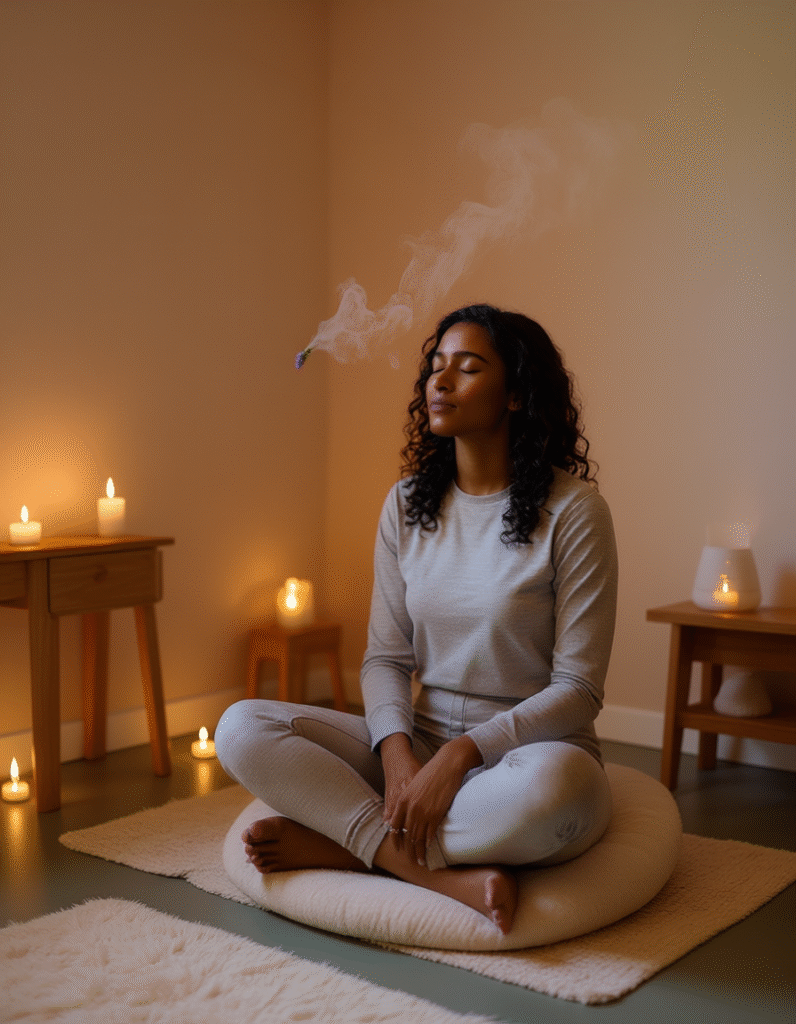
Scent is sneaky. It goes straight to the part of your brain that controls memory and emotion. Lavender, chamomile, vanilla—these are classics for a reason.
But keep it gentle. A diffuser with a soft mist is better than drowning the room in oils. The goal isn’t to make the space smell like a perfume shop, it’s to make your shoulders drop without you even noticing.
7. Interactive Light Walls
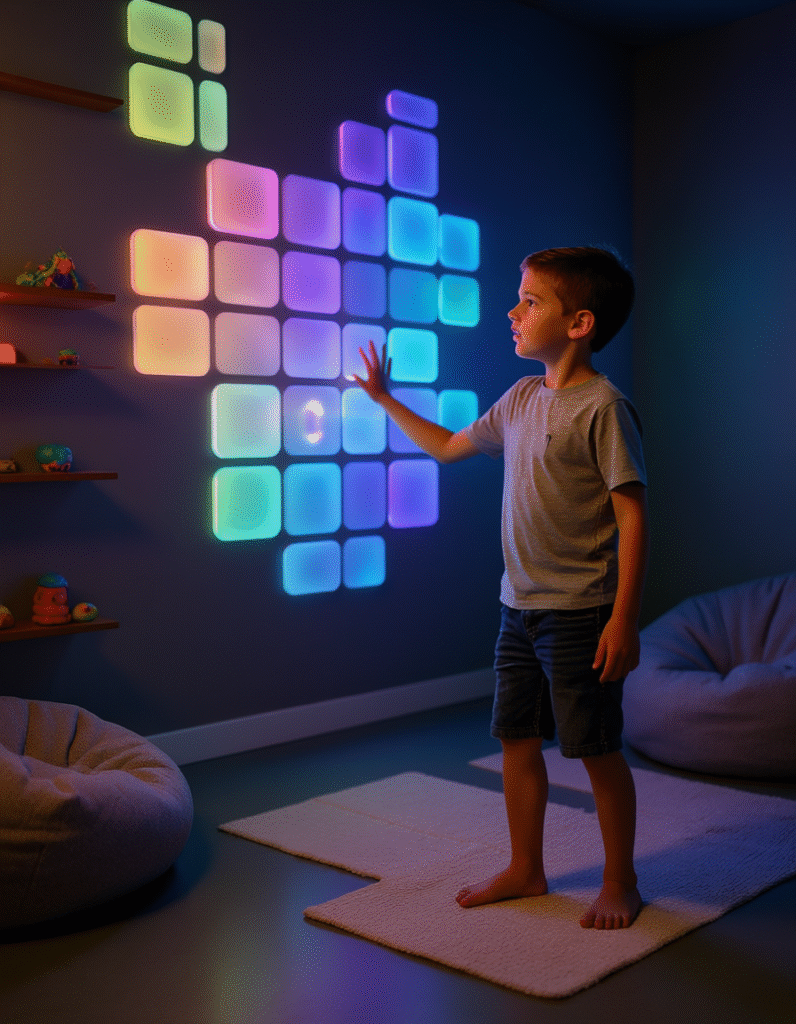
This one is a little futuristic, but worth it if you can swing it. Light panels that respond to touch or sound turn your sensory room into a playful escape. You tap, the colors shift, and suddenly you’re in a conversation with light itself.
Kids love them, but adults do too (even if they pretend they don’t). It’s about giving your brain something simple and satisfying to engage with, without stress or goals.
8. Nature Elements
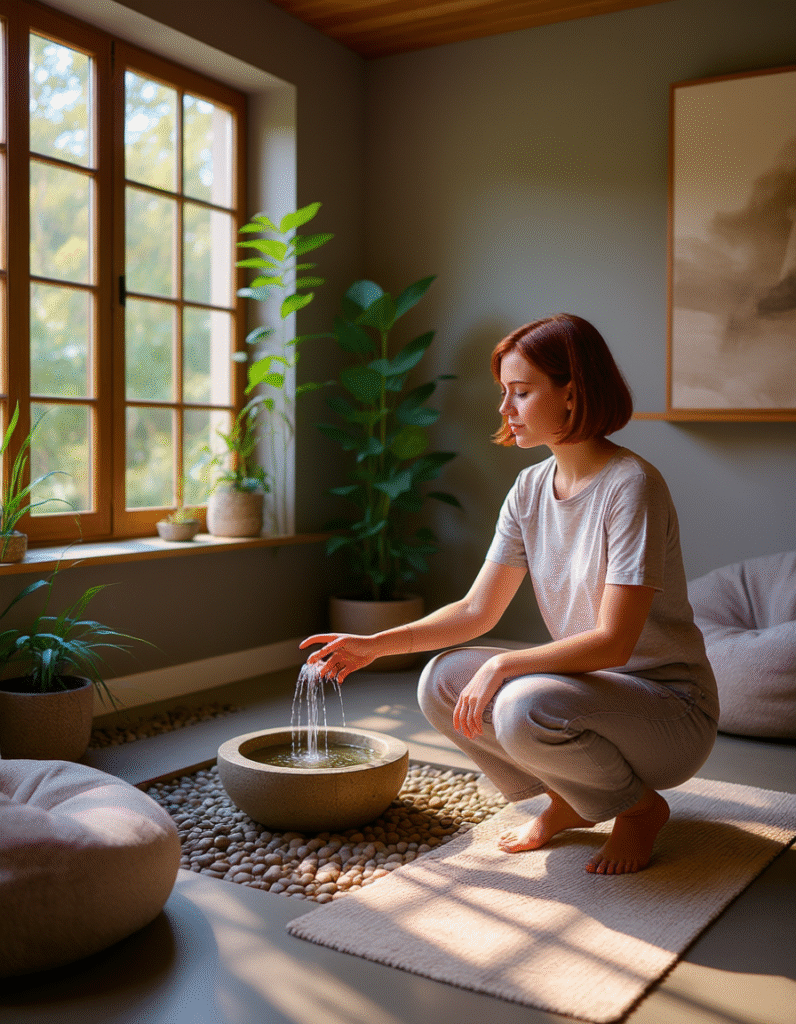
Nature is medicine we keep forgetting to take. Add plants, stones, driftwood, or even a small water feature. Greenery slows down the nervous system, like your body recognizes something ancient in it.
Not everyone has a green thumb. That’s fine—fake plants still soften the space. And if you can, place your sensory spot near a window. Natural light and a peek at the outdoors change everything.
9. Creative Play Corner
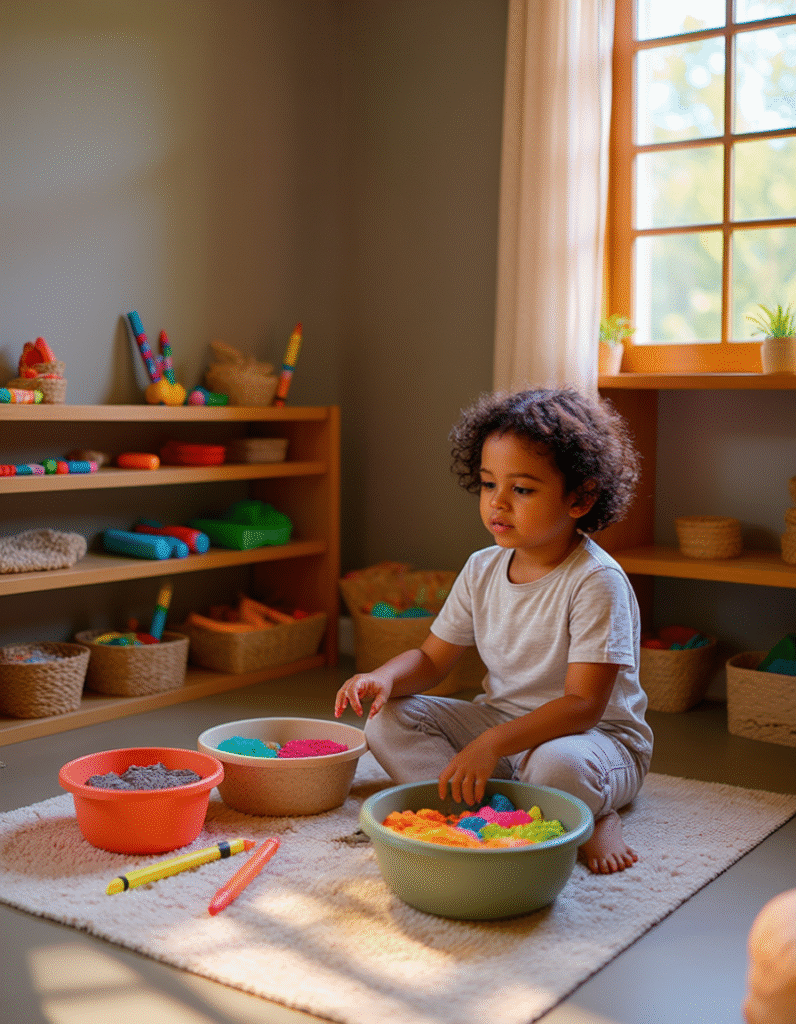
Calm doesn’t always mean passive. For some, doodling, painting, or fiddling with clay is the ultimate sensory therapy. A tiny desk with art supplies gives restless hands somewhere to go.
Think about it like giving your brain a pressure valve. The goal isn’t to make masterpieces—it’s to let feelings spill out sideways, without judgment. Scribbles can heal in ways that words can’t.
10. Personal Comfort Objects
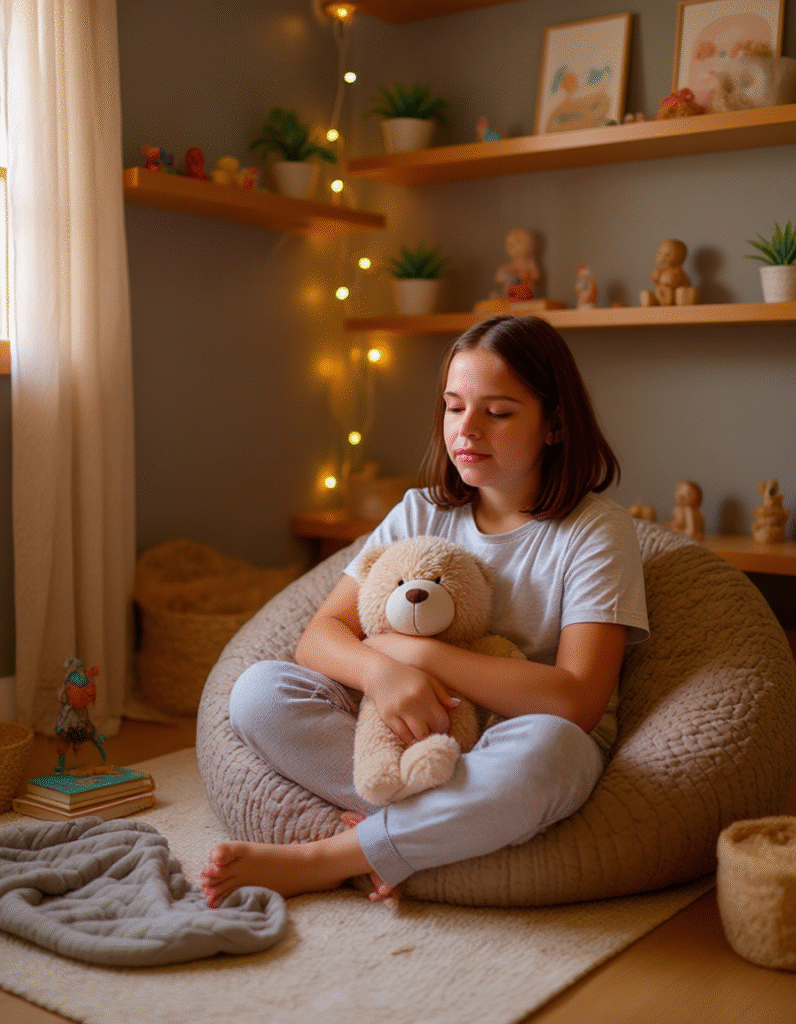
This might sound too simple, but it’s the glue that makes the space yours. A favorite blanket, a childhood stuffed toy, photos that make you laugh, or a trinket that just feels good in your hand.
Sensory rooms aren’t one-size-fits-all. The most powerful part is personalizing it. When you step in, it should whisper, “this is yours.” Not some showroom display, but a lived-in, loved space.
11. Projection Magic on the Ceiling
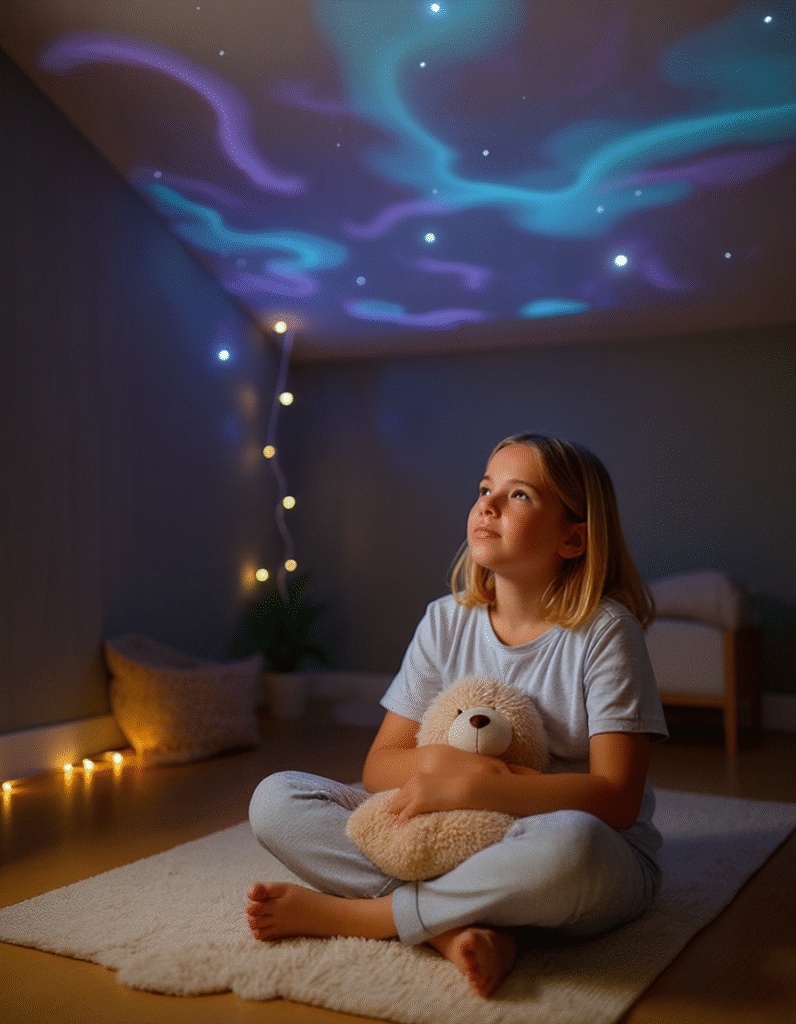
Sometimes, all you want to do is stare. A projector that casts galaxies, clouds drifting by, or even slow-moving abstract colors on the ceiling can do wonders. Lying back and watching shifting shapes gives your mind something gentle to hold onto instead of spinning in circles.
And the best part? You don’t need a pricey machine. Even small star projectors or DIY light-and-filter setups can turn blank walls into something alive.
12. Bubble Tubes or Lava Lamps
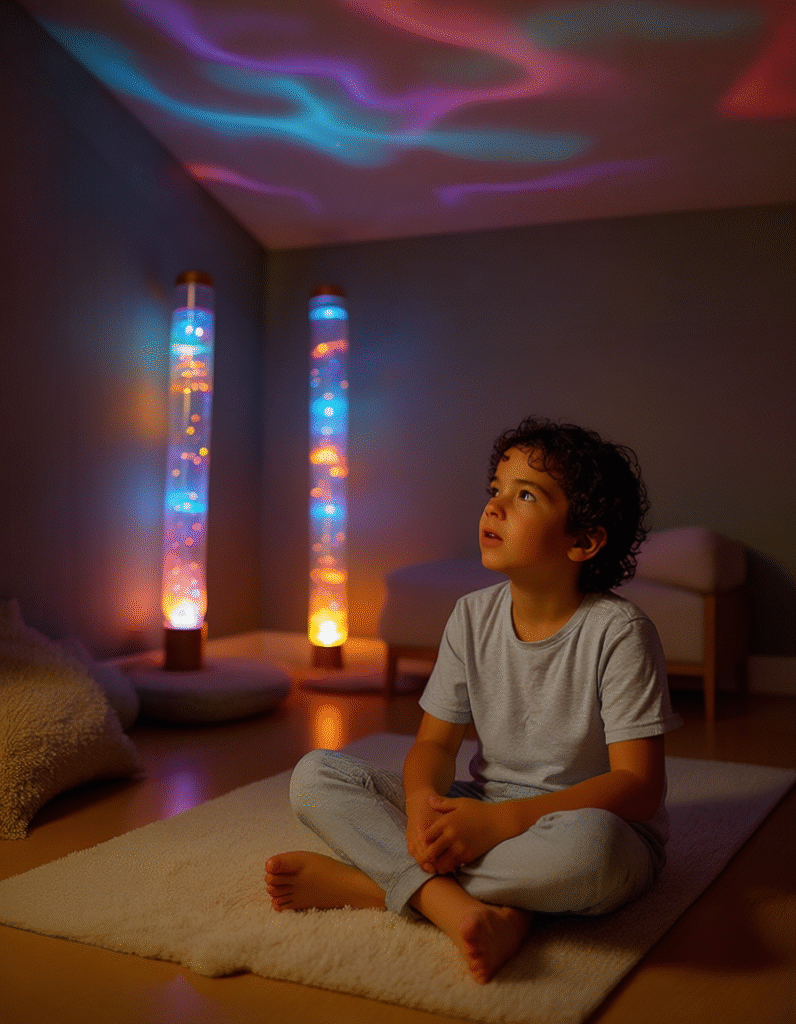
Moving bubbles have a hypnotic pull. A tall bubble tube that changes colors or even an old-school lava lamp slows the brain down. The way liquid blobs rise and fall is oddly grounding, almost like watching time itself stretch.
Children can stare for ages, but adults secretly love them too. Something about bubbles rising is a soft reminder that it’s okay to just exist without rushing anywhere.
13. Floor Mats for Barefoot Grounding
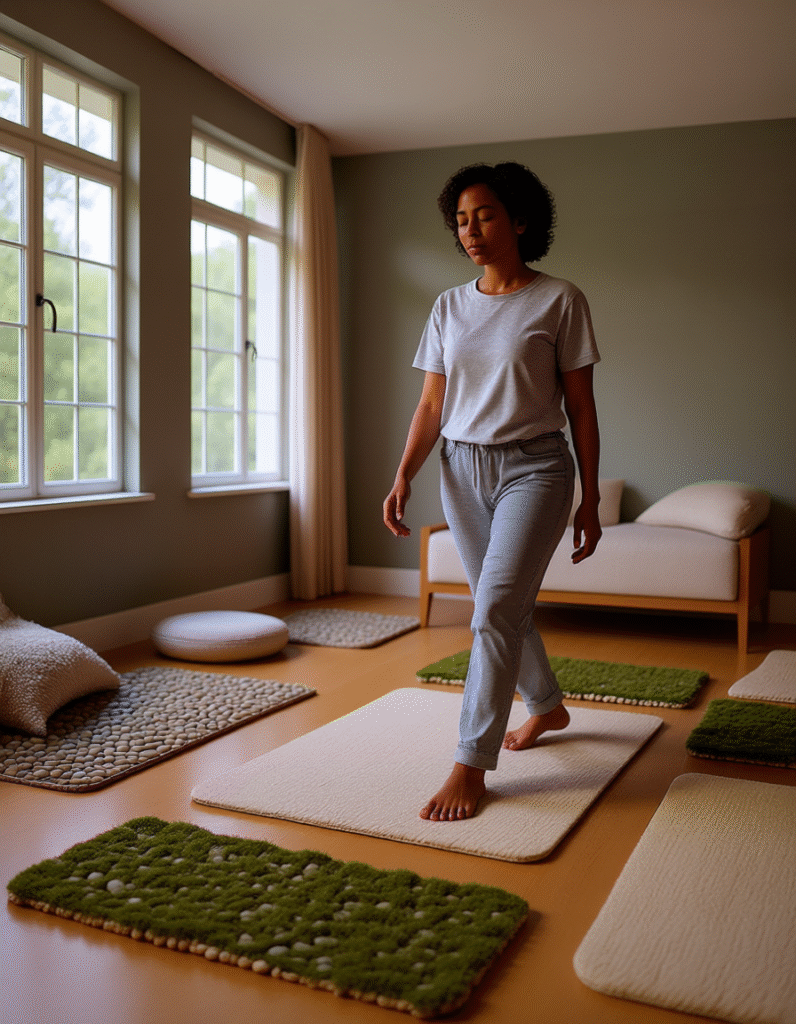
The ground under your feet matters more than most people think. Add mats made from cork, foam, bamboo, or textured rubber, so your feet have a little playground. Walking barefoot on different surfaces gives tiny sparks of sensory feedback that anchor you.
It sounds small, but when stress sits heavy, even feeling the texture of the floor can reset your nervous system. Try mixing soft mats with a rougher woven rug for contrast.
14. Color Zoning with Paint or Fabric
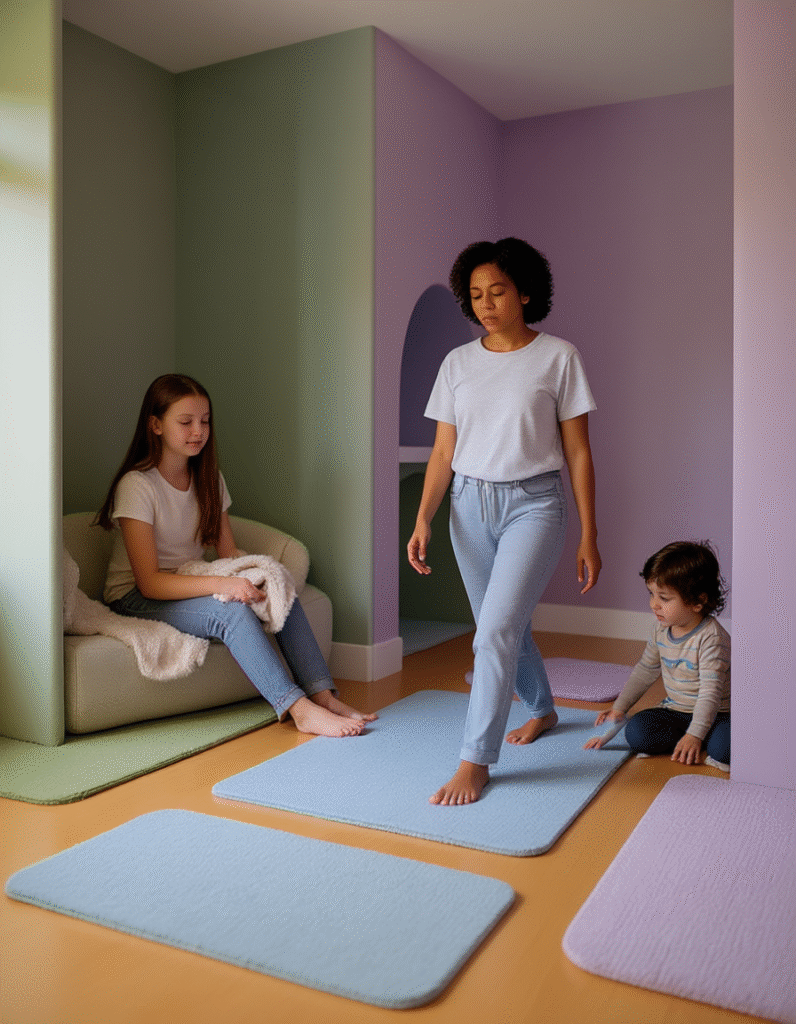
Colors shape mood, even when you don’t notice it. Imagine one corner painted deep navy for coziness, another with pale sage green for focus. Instead of one uniform wall, carve little moods into the room with paint or hanging fabrics.
It doesn’t need to be neat. Draped curtains or pinned-up fabrics can instantly shift energy. Like mood swings, but the good kind.
15. Tactile Bins and Boxes
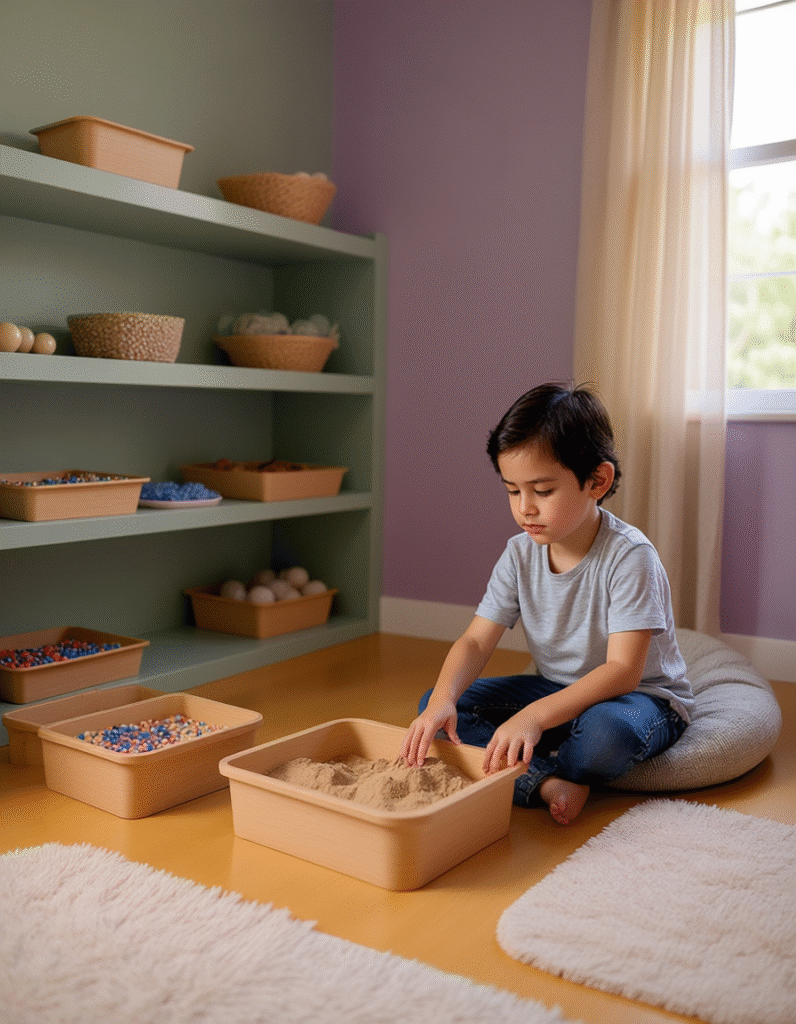
Think childhood sensory play, but grown up. A bin filled with smooth stones, another with kinetic sand, another with dried beans or beads. Dip your hands in, let them run through—it’s strangely calming.
It’s not childish, it’s primal. Hands remember textures long after the brain forgets its worries. Keep the bins tucked in a corner so you can swap them depending on the mood.
16. Mirrors for Light and Self-Awareness
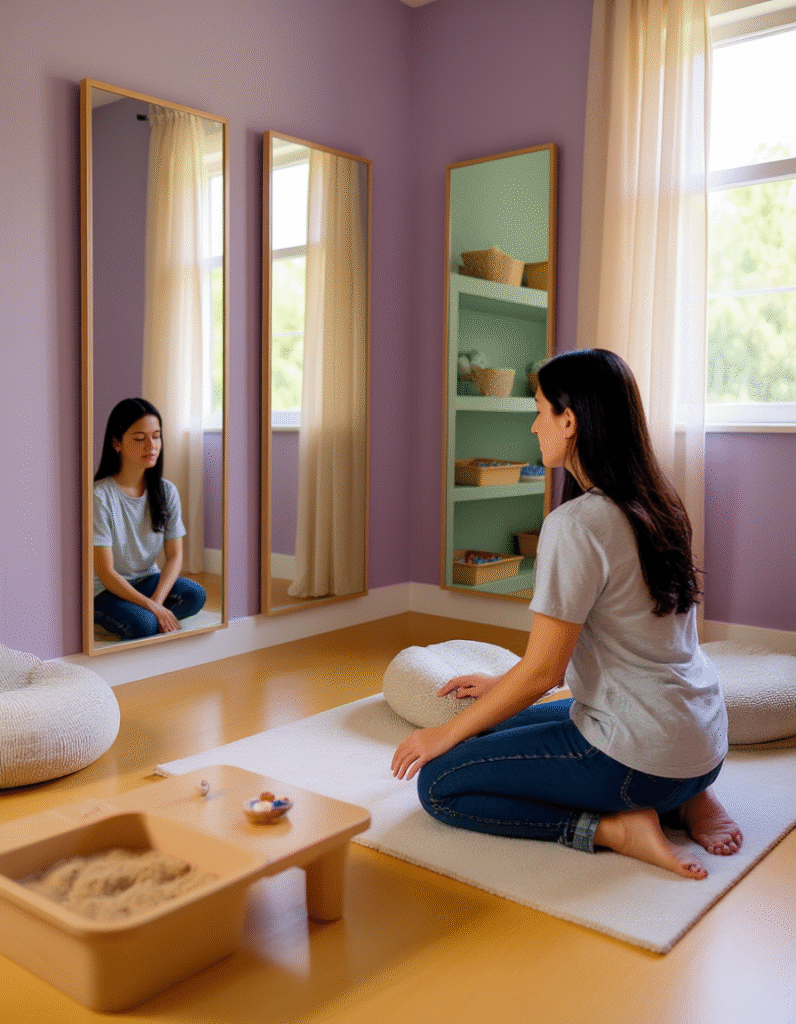
Mirrors aren’t just for checking your hair. Placed in the right spot, they bounce light, open up tiny spaces, and even help with grounding. Catching your own reflection mid-breath reminds you: oh, I exist here, now.
For kids, mirrored panels make play feel magical. For adults, a single leaning mirror can shift the room’s energy from closed-in to expansive.
17. Gentle Rocking Furniture
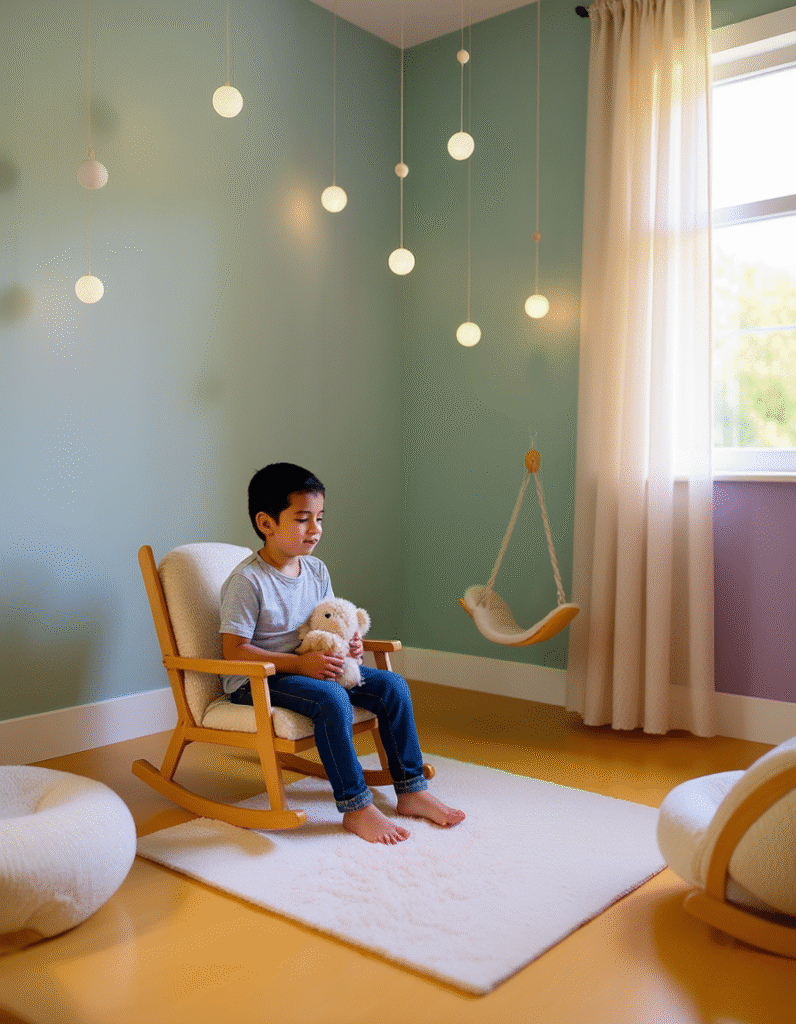
There’s a reason rocking chairs never go out of style. The rhythmic sway is hardwired into human comfort. A simple glider chair, rocker, or even a DIY rocking bench gives the body a movement loop that soothes without thought.
Sometimes calm doesn’t come from stillness but from repeating, gentle motion. Rock forward, rock back, and let your brain melt into the rhythm.
18. Story or Audiobook Nook
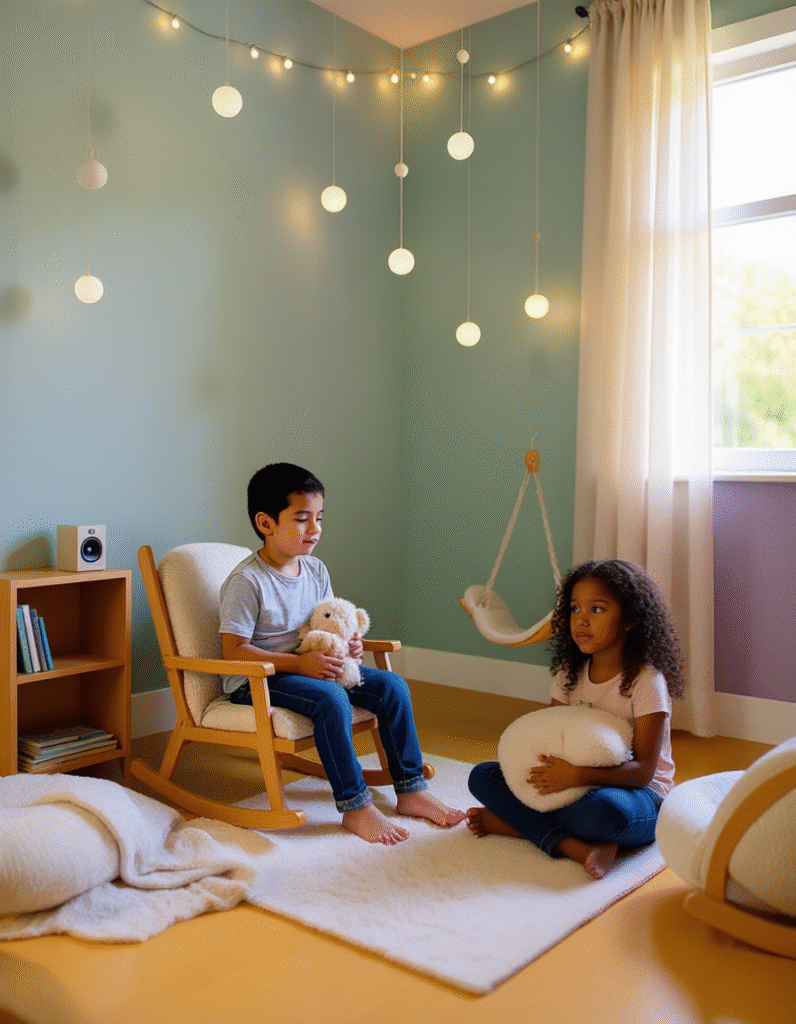
Not everyone calms through silence. Some need words that aren’t their own. Add a tiny bookshelf, a speaker, or a device loaded with audiobooks and guided stories.
Losing yourself in another voice gives your brain a safe escape. It’s like being read to as a child—comforting, steady, almost like being tucked in.
19. Chalkboard or Writable Walls
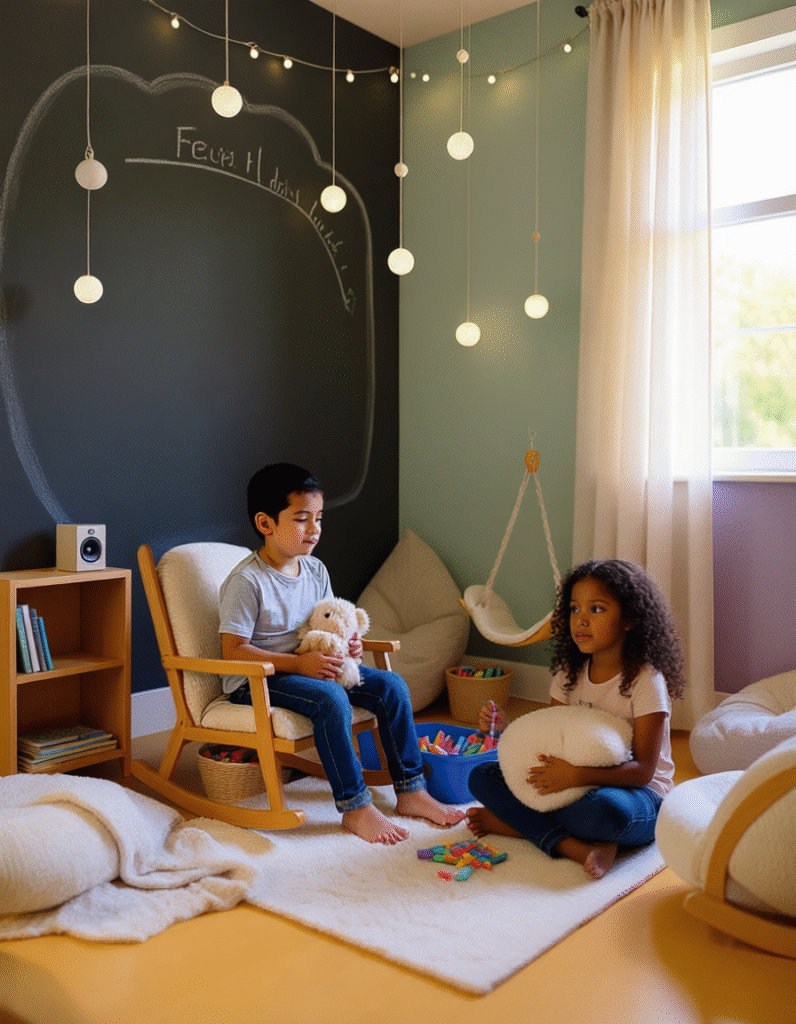
Expression doesn’t always come out right in speech. A wall painted with chalkboard paint or a big whiteboard lets thoughts spill without pressure. Write, erase, doodle, repeat.
It becomes a place to dump the noise inside your head. Sometimes a scribbled word or messy drawing is the most therapeutic thing you can do.
20. Temperature Play
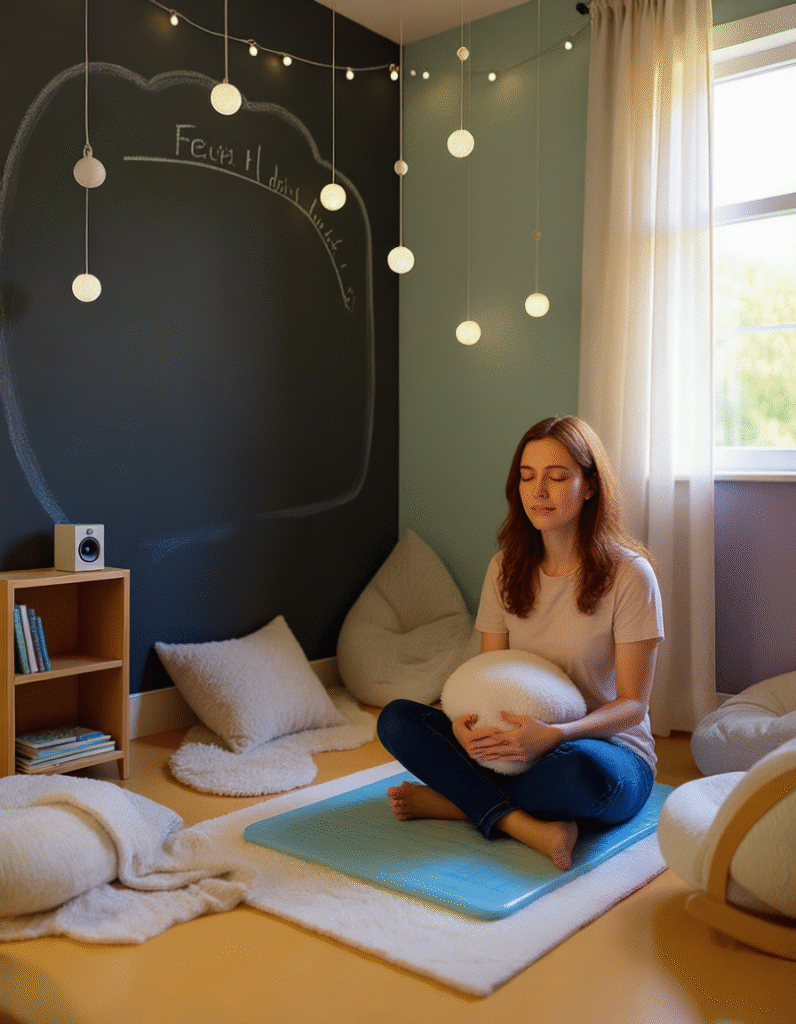
Heat and coolness can both calm in different ways. A heated throw, a mini fan, or even a bowl of cool pebbles to hold in your hands changes the sensory experience instantly.
Temperature shifts remind your body it’s here, alive, safe. It’s subtle, but deeply grounding, especially when paired with other calming elements like sound or scent.
Final Thoughts
Building a sensory room isn’t about copying Pinterest boards until your wallet cries. It’s about knowing yourself. Some people need dark and quiet, others need color and music. You experiment, you tweak, and over time the space shapes itself around you.
What’s wild is how it changes the rhythm of your days. A few minutes in your sensory nook, and suddenly the rest of life feels less jagged. Kids sleep better. Adults stress less. Even pets sometimes curl up in there, as if they know it’s a safe zone.
And here’s the secret no one tells you—it doesn’t have to be perfect to work. A corner with a lamp and a blanket can still change how you breathe. It’s not about perfection, it’s about intention.
So start small. Add a light, a pillow, maybe a plant. Then see how it feels. Let the space grow with you, and you’ll find yourself with a sensory room that feels like a quiet friend, always waiting.

Emma is a passionate home decor enthusiast and the voice behind Home Evoke. With a keen eye for design and a love for transforming spaces, she shares her expertise and creative ideas to help others create beautiful, functional homes. Through her blog, Emma inspires readers with practical tips, trend insights, and DIY projects that make home styling effortless and enjoyable.

